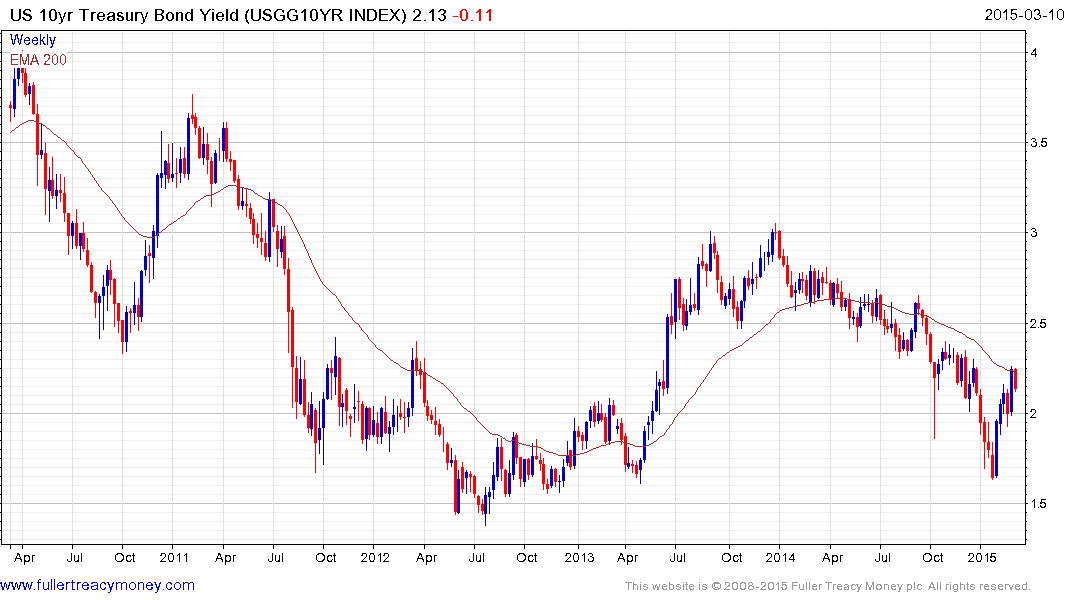Treasury Auction Demand Masks Ambivalence of U.S. Mutual Funds
This article by Alexandra Scaggs and Daniel Kruger for Bloomberg may be of interest to subscribers. Here is a section:
“We’ve had a lot of very good auctions from the Treasury in recent months,” said David Keeble, head of fixed-income strategy in New York at Credit Agricole SA. “Most have been bid by the domestic mutual funds, rather than the foreigners.”
In January and February, domestic investors including mutual funds bought 37 percent of the three-year notes sold, according to Treasury allotment data. That was a step up from last year, when they bought just 24 percent of three-year notes, as forecasters widely expected Treasury yields to rise.
?“We haven’t seen evidence of people loading up on bets in one direction or another” on Treasuries, said Jim Collins, interest-rate strategist with Citigroup Inc., a primary dealer.
The yield on the benchmark 10-year Treasury note will rise to 2.58 percent by the end of the year, according to a Bloomberg News survey of economists. In January 2014, the median forecast for the year-end yield on the benchmark 10-year note was 2.80 percent. It ended the year at 2.17 percent.Bearish sentiment may be counterbalanced by the ECB bond- buying program. Yields on 10-year German securities have dropped to a record, pushing the yield difference between 10-year Treasuries and bunds to the widest since 1989.
“There’s not enough supply out there,” BMO’s Magid said. “These auctions give everyone a chance to get a share.”
Some of the bullish considerations for Treasuries include the wide yield spread between the USA and Europe, the lack of an uptick in inflationary expectations, low wage growth and the fact that investors have little choice but to roll into new issues as old bonds mature because of how the regulatory system is structured.
However it is also true that bonds do best when the economy is not doing well. As job growth improves and the US economy pulls out of a very difficult environment the requirement for extraordinarily low rates is fading. Some might argue that the Fed will be under pressure to hold off on raising rates because of the strength of the Dollar and there is some weight to that argument.
However the problem is that asset prices have already recovered and to pause for any longer would increase the potential for an investment bubble to develop. It wouldn’t be the first time the Fed has inflated a bubble by failing to act to withdraw liquidity and we will learn this year if they have learned from that experience.

The US 10-year yield has unwound its overextension relative to the 200-day MA and at least paused. Yields will need to find support in the region of the January low if medium-term supply dominance is to be confirmed.
Back to top


